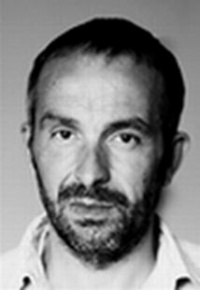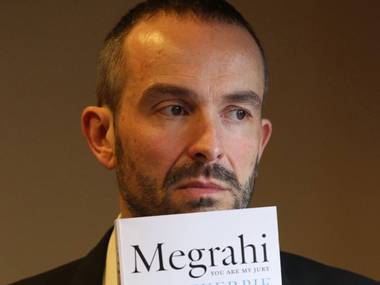Difference between revisions of "John Ashton"
(→"Was Libya really behind it?": revising link) |
(See also The how, why and who of Pan Am Flight 103) |
||
| Line 61: | Line 61: | ||
==Website== | ==Website== | ||
John Ashton's website is [http://www.megrahiyouaremyjury.net/ here]. | John Ashton's website is [http://www.megrahiyouaremyjury.net/ here]. | ||
| + | |||
| + | ==See also== | ||
| + | * [[The how, why and who of Pan Am Flight 103]] | ||
==External links== | ==External links== | ||
Revision as of 18:34, 8 July 2013
John Ashton is a British author, journalist and film researcher who is focused on the Lockerbie Bombing of December 1988.
Contents
Maltese Double Cross
John Ashton was researcher for the 1994 documentary film The Maltese Double Cross - Lockerbie about the 1988 bombing of Pan Am Flight 103. The film propounded a "drug conspiracy theory" as the motive for the bombing, a theory which was been ridiculed by Barry Walker as follows:[1]
"Having watched the version televised by Channel 4 before the 'Lockerbie debate' many times I found this version of The Maltese Double Cross fascinating. It is far longer than the televised version and is significantly different.
I have long been a critic of The Maltese Double Cross and Cover-up of Convenience written by the film's researcher John Ashton and Ian Ferguson.
I have no objection to the first 1 hour and 36 minutes which was, to be honest, really very good.
My objection is to the introduction of the 'drug conspiracy theory' between 1.36 and 2.16, in particular the section 1.55-2.16 and above all the blatantly fraudulent 'hotel room scene' featuring Oswald Le Winter between 2.12.50 and 02.15 (which was longer than the televised version and mentioned the character 'Lovejoy'.)
In the far briefer televised version of Steve Donahue's 'evidence' he is described as an 'undercover DEA agent' with no mention of his being a convicted trafficker. The section concerning 'Mr Goldberg' and his supposed meeting with Khald Jafaar is greatly different.
While some of the 'evidence' is this forty-minute section (1.36-2.16) is demonstrably fabricated, my point is that even if these allegations of 'controlled' drug deliveries is true, is it of any relevance to the bombing? I would also point that the only evidence in the film that drugs were recovered at Tundergarth was an article in Private Eye magazine for whom John Ashton works.
I also note that the evidence of Linda Forsyth that Matthew Gannon was sitting in 1st class was expunged although elsewhere the film claims on two other occasions that he was (once in Le Winter's staged 'evidence'). The official version is that he was in Business Class.
My central criticism of Cover-up of Convenience is that most of the book was devoted to 'proving' this fraudulent section of the film. Without their obsession with Khalid Jafaar (which continues to this day in the pages of Private Eye) Messrs Ashton and Ferguson might have written an important book.
Indeed without the 'drug conspiracy' section The Maltese Double Cross might have been a good film. Pity Francovich didn't grasp the bomb was introduced at Heathrow."
The full 2-hour 36-minute version of the film is available here on YouTube.
By the same author
John Ashton has written the following books and articles on the Lockerbie bombing:[2]
"Cover-Up of Convenience"
Following the Libyan Abdelbaset al-Megrahi’s conviction for the Lockerbie bombing on 31 January 2001, John Ashton co-wrote a book entitled "Cover-Up of Convenience: The Hidden Scandal of Lockerbie" with fellow journalist Ian Ferguson.[3] According to a review of the book in The Observer on 17 June 2001:[4]
- "If 'Cover-Up of Convenience' occasionally loses narrative focus, that is hardly surprising bearing in mind the difficulties with co-authors on opposite sides of the Atlantic, and the speed with which this book has been produced."
According to the blurb:
- "Based on many years’ research, this book demonstrates that the truth was buried to protect the hidden agendas of Western policy in the Middle East, demolishing the case against Libya, it presents shocking evidence that the terrorist masterminds lay in Iran, Syria and Lebanon and also raises questions against the Western intelligence services."
"Cover-Up of Convenience"’s 'Index' runs to 14 pages but the name of the highest profile Lockerbie victim Bernt Carlsson is nowhere to be found. Which turns out to be a very revealing omission since the 'Acknowledgments' page states:
- "A multitude of people warrant acknowledgment, far too many, in fact, to list here. The relatives of the Lockerbie victims deserve particular thanks, chief among them Martin and Rita Cadman, Pam Dix, John and Lisa Mosey, Sanya Popovic and Jim and Jane Swire."
- "Fellow journalists gave generous help, including Jan-Olof Bengtsson, Ronen Bergman, John Coates, John Cooley, Con Coughlin, Don Devereux, Rob Evans, Paul Foot, Drago Hedl, Bjorn Hygstedt, David Jessel, Shelley Jofre, David Johnston, Jürgen Krönig, Gunter Latsch, John Loftus, Neil Mackay, Joe Mifsud, David Milne, Mats-Eric Nilsson, Margaret Renn, Murdoch Rodgers, Frank Ryan, Kjetil Stormark, Phillip Wearne, Terry Wrong and David Yallop."
"Megrahi: You are my Jury"
In 2012, John Ashton's book "Megrahi: You are my Jury" was published.[5] Dr John Cameron reviewed John Ashton's 2012 book, as follows:
- "I read John Ashton's 500-page tour de force "Megrahi: You Are My Jury" at a sitting and though I would not expect anyone else to do so it is an invaluable 'source' for the public. His dissection of the trial in general and the 80-page judgement of Lords Sutherland, Coulsfield and MacLean in particular make compelling if disturbing reading.
- "The British public, media and politicians have a spectacularly poor knowledge of science and technology as debates over such things as windfarms and GM crops makes clear. It would be unreasonable to expect our Law Lords, classically educated at public schools where the teaching of science was bad and technology non-existent, to be any better. It was therefore only to be expected they would struggle to comprehend the weakness of the forensic evidence or to understand the operation of Frankfurt airport's X-ray security. Yet, as the UN observer wrote, that does not excuse their reliance on the partial evidence from wholly unreliable witnesses to reach a verdict 'beyond any reasonable doubt'. The Crown's case was that Abdelbaset al-Megrahi and Lamin Fhimah, acting together, smuggled the bomb on board a feeder flight from Malta in unaccompanied baggage. The Prosecution insisted they were either both innocent or both guilty however the only evidence linking Fhimah to this scenario depended on the evidence of one witness. This was Majid Giaka, a CIA informant, and by the time Fhimah's counsel, Richard Keen, had finished with him it was clear Giaka was both a liar and a fantasist.
- "I thought the trial was over and though it still dragged on with increasing absurdity I was not surprised when the Crown closed that Keen submitted Fhimah had no case to answer. However, I had not counted on Alastair Campbell, who led the Crown's case, informing the court he was dropping the conspiracy charge i.e. separating al-Megrahi and Fhimah. This was allowed but conspiracy was the basis of the case so I asked a leading figure in our judiciary if they could do that and he said the Law Lords could do what they liked.
- "When I replied that was illogical and unfair he archly responded, 'Show me where it says Scots Law must be logical and fair,' and an historic miscarriage of justice was inevitable."[6]
"Was Libya really behind it?"
John Ashton contributed to this 2012 article featuring Edwin Bollier which appeared in the Swiss magazine Beobachter.[7]
Other publications
In 1988, John Ashton co-wrote a leaflet entitled Blood on their Rands: an investigation into the worldwide activities of the British Tyre & Rubber Co Ltd (BTR), with the help of the National Union of Metalworkers of South Africa.[8]
Website
John Ashton's website is here.
See also
External links
- "John Ashton's Lockerbie dictum: 'Don't mention Bernt Carlsson'!"
- "Lockerbie Spotlight on John Ashton"
References
- ↑ "Critique of The Maltese Double Cross by 'baz'
- ↑ "Lockerbie Cover-Upper Ian Ferguson"
- ↑ "Cover-Up of Convenience: The Hidden Scandal of Lockerbie"
- ↑ "The show trial must go on" The Observer, 17 June 2001.
- ↑ "Megrahi: You are my Jury"
- ↑ "Dr Cameron's review of John Ashton's 2012 book"
- ↑ "Was Libya really behind it?"
- ↑ "Leaflet written in 1988 by John Ashton" with the help of the National Union of Metalworkers of South Africa

